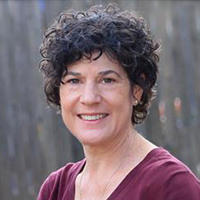What was it like initially launching the CU-DRC?
It was a very slow start for us. I joke about getting our award notice on April Fool’s Day two weeks into the pandemic during a hiring freeze. It was a challenge, and we had to be very creative, especially since we weren’t able to hire anyone. All labs on campus were closed for at least a month, and clinical research was paused. When basic research was allowed to come back in a limited fashion, we had to stagger people in the labs.
Despite the "slow start" the CU-DRC Pilot & Feasibility (P&F) Program, which aims to bring new investigators into the field, seems to have hit the ground running and continues to build momentum. Two cohorts have already been awarded, with a new cohort just getting underway. Can you share a little bit about this program?
The P&F Program has become a key element in recruiting and training promising diabetes research scientists. The program is open to young researchers just getting their start and established researchers looking to apply their expertise to a new area of study. Each year, we fund four investigators, who are selected from a growing number of applications.
One of the great things about P&F funding is that it gives researchers the chance to explore something novel, so they can generate data and apply for an NIH grant. It also has been very successful; several investigators in our first two cycles have gone on to get their own NIH funding to expand their research. The CU School of Medicine made an annual commitment of $100,000 to help support the program. Hopefully, they realize they’re getting a great return on their investment.
CU Anschutz is known as a regional hub for basic, translational and clinical research programs focused on Type 1 and Type 2 diabetes, diabetes complications and autoimmunity. How does the CU-DRC encourage strengthened cross-campus collaboration?
When you have a diverse group of researchers spanning multiple hospitals, programs and centers, there are opportunities to improve collaboration. Type 1 and type 2 diabetes, for example, are very different diseases, although both can lead to similar complications. The multidisciplinary approach of the CU-DRC is bringing these two scientific communities together to learn from each other and share information for everyone’s benefit.
It’s been incredibly exciting to see everyone interacting – Children’s Hospital Colorado, the Barbara Davis Center, the Division of Endocrinology, the Department of Medicine – as well as institutions beyond our campus. We’re also coordinating with other similar programs, including the University of Colorado Nutrition Obesity Research Center, to make sure we have cross-talk between our related research communities. All these different silos of research are coming together as one united group to build on each other’s strengths.
What are the benefits of utilizing CU-DRC’s biomedical core facilities?
The four cores – Tissue Procurement and Processing; Cell and Tissue Analysis; Diabetes Modeling; and Clinical Research – help facilitate the actual research that is going on. Through shared efficiencies and resources, the cores enable researchers to do something they may not have been able to do before. An example would be making a piece of equipment available that was too expensive to purchase for a single study.
What other resources does the CU-DRC offer its members?
The CU-DRC program’s membership includes nearly 100 investigators who come from 17 departments and divisions. We launched a seminar series in the fall of 2020, where we regularly share research discoveries amongst our members. As a DRC, our local community is now part of a national diabetes seminar series, so we can also tap into national resources to bring in and share information.
Sussel encourages anyone interested in sharing ideas on how the CU-DRC can better facilitate diabetes research to contact Lisbel Woods, CU-DRC program manager.
2022 Pilot and Feasibility (P&F) Program Awardees
-
Emily Bates, PhD, associate professor of pediatrics, University of Colorado School of Medicine, “Determining the Effect of In Utero CBD Exposure on Eating Behaviors, Obesity and Insulin Resistance”
-
Nikki Farnsworth, PhD, assistant professor of chemical & biological engineering, Colorado School of Mines, “Engineered Nanocapsules for Targeted Drug Delivery to the β-Cell in T1D.”
-
Jefferson Knight, PhD, associate professor of chemistry, University of Colorado Denver, “Oxidative Stress-Induced Protein Damage in β-cell Secretory Dysfunction.”
-
Kathleen Woulfe, PhD, assistant professor of cardiology and geriatric medicine, CU SOM, “Hyperglycemia Mediates Sarcomeric Mechanical Function in Cardiac and Skeletal Muscle.”
Guest contributor: Jessica Ennis, freelance health and medical writer





